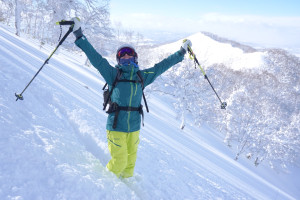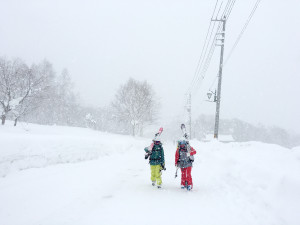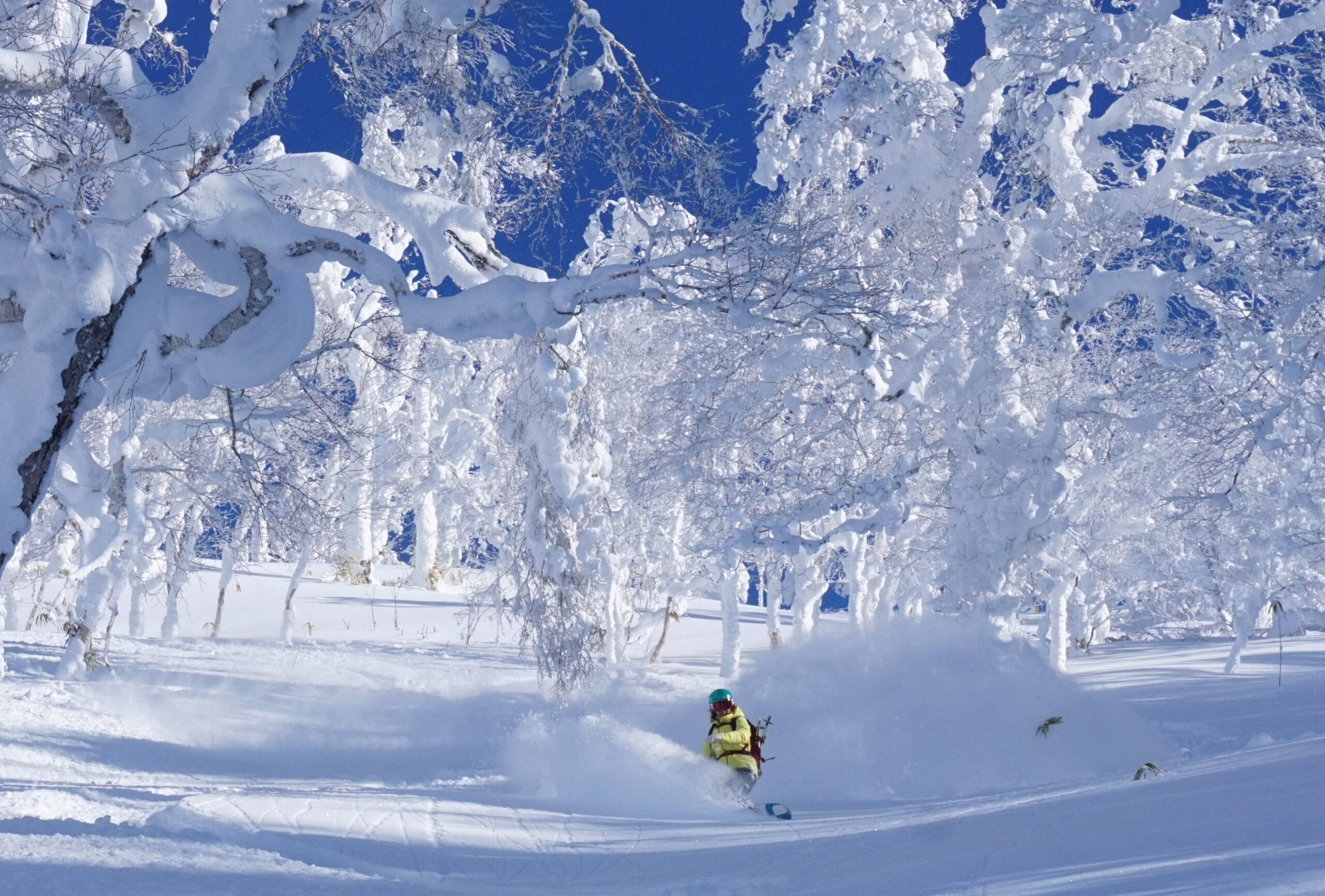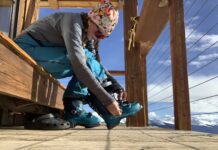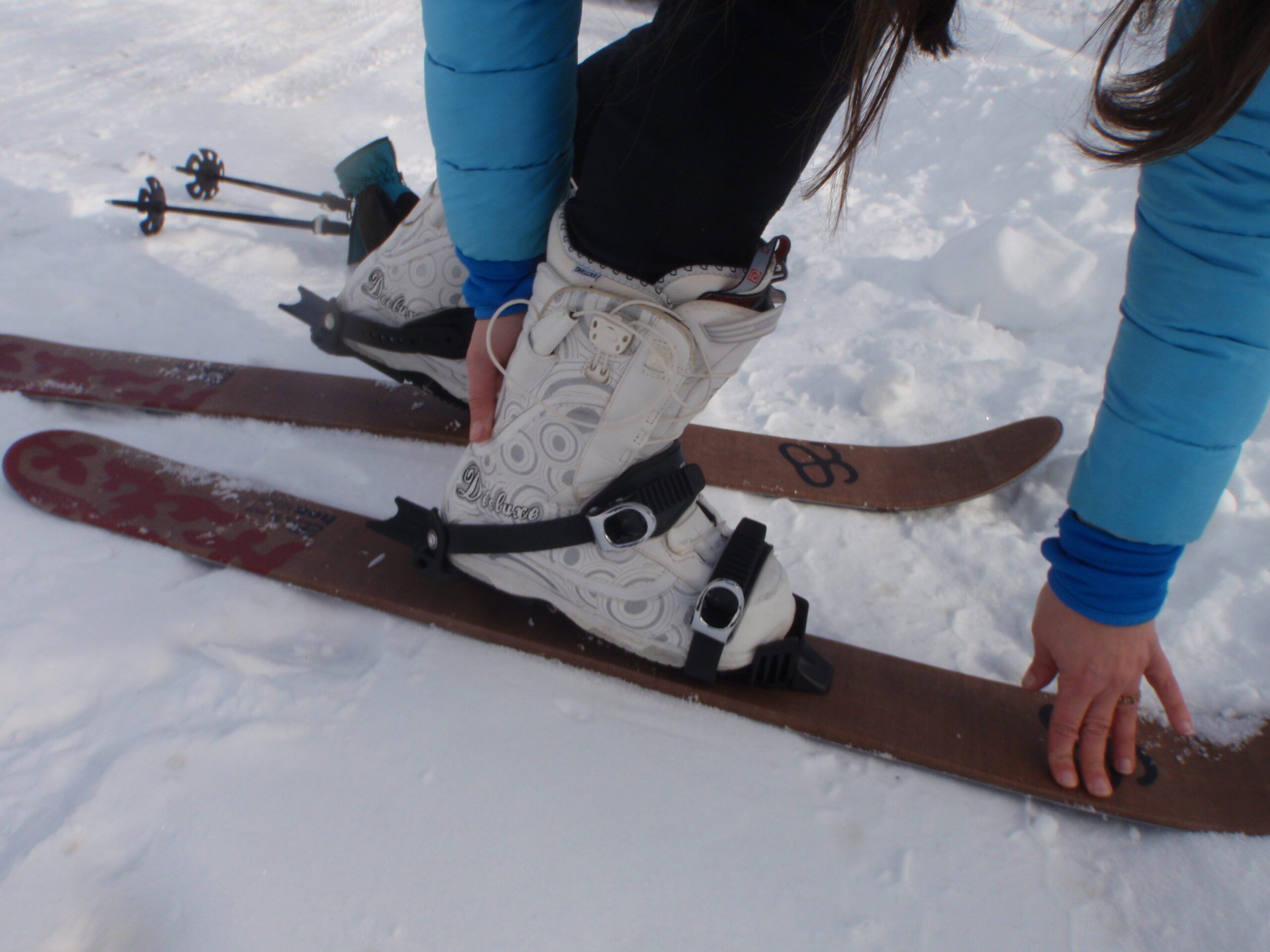I remember the first time I saw a Japan segment in ski film. There were massive pillow lines, drops down avalanche gates, and trees loaded down with snow. I thought, “Wow, that looks amazing, I didn’t even know there was skiing in Japan.” As it turns out there as many ski resorts in Japan as there are in the US, and Niseko happens to get more snow than almost anywhere else in the world. So I hopped a plane and traveled half way around the world to sample the goods. And it was just as good as it was in every film segment I have ever seen.
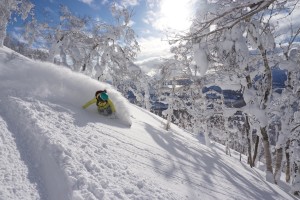 In a typical January, the legendary Japanese slopes often get more snow than any other ski area in the world. The northern island of Japan, Hokkaido, will have as much snow in December and January as Aspen will receive in its entire season — in the neighborhood of 16 feet. The long, low-angle pitches are perfect for soul-carving, powder-slashing and definitely call for a snorkel.
In a typical January, the legendary Japanese slopes often get more snow than any other ski area in the world. The northern island of Japan, Hokkaido, will have as much snow in December and January as Aspen will receive in its entire season — in the neighborhood of 16 feet. The long, low-angle pitches are perfect for soul-carving, powder-slashing and definitely call for a snorkel.
Ski resorts and backcountry slopes are sprinkled throughout the southern end of Hokkaido. Right in the center is Mount Yotei, a stunning dormant volcano rising just over 6,000 feet above the valley floor. The volcanic activity also formed plenty of smaller peaks which lead right out to the coast.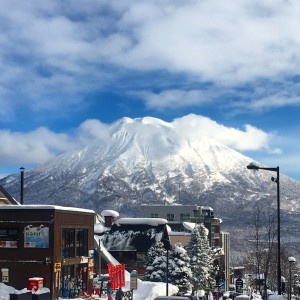
Despite the infamous legends told around the world about Japan, there are few Americans on the slopes. Though deep, the terrain is certainly not steep; but bottomless turns beneath the birch trees and “juhyo” are worth it. The Japanese have brought zen back to snowboarding, making the most of the deep snow by shaping boards more like surfboards to float through the powder.
Off the slopes, in the heart of Hirafu, there is an endless supply of Australians who have found the hidden treasures of Hokkaido. But the area further out around Niseko is farmland, which is not densely populated and has more of a rural feel to it. Though the island is very separate from the rest of Japan, it still has rich culture and even richer foods. Another byproduct of the volcanoes are hot springs, called onsens. And you can find one on almost every street, bubbling with warm water to soothe aching muscles from long days of shredding.
The cuisine is also somewhat different than other regions in Japan, with more emphasis on ramen and seafood specialties such as crab. But since it is a rural farming area, you will also find amazing potatoes and cows. The potatoes are used in many traditional recipes replacing rice flour — potato ramen and steamed buns for instance. The cows offer amazing Wagyu beef and cheese products. Japanese cuisine isn’t usually associated with cheese, but in Hokkaido you will find delectable camembert, cheesecake and other creamy deserts.
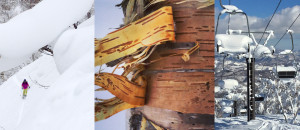
One of my favorite places is on the peak of Niseko Annapuri. It can be accessed from the top lifts of Niseko United, with a quick hike to the summit. Most days it is socked in with snow, and being well above treeline it is almost dizzying to carve down its slopes through the infinite powder. On a clear day it offers an unrestricted view of Mount Yotei, also called Ezo Fuji, but there are few bluebird days in January. Before the Japanese lived in Hokkaido there was an indigenous tribe called the Ainu people. Many of the local names are in the Ainu language still. “Napuri” means mountains; “niseko” is translated as “river which runs around the bottom of a sheer cliff.” Another fabulous spot is touring into the side country off “Rusutsu,” which takes its name from the Ainu word for “end of the road.” Rusutsu is a nearby resort to Niseko with an amusement park at its base. The trees branches are laden with snow, forming “juhyo,” “snowy ice monsters.”
But something that doesn’t need translation is a smile, and if never-ending powder turns put one on your face, then Japan in January is a must for any skier or snowboarder.
